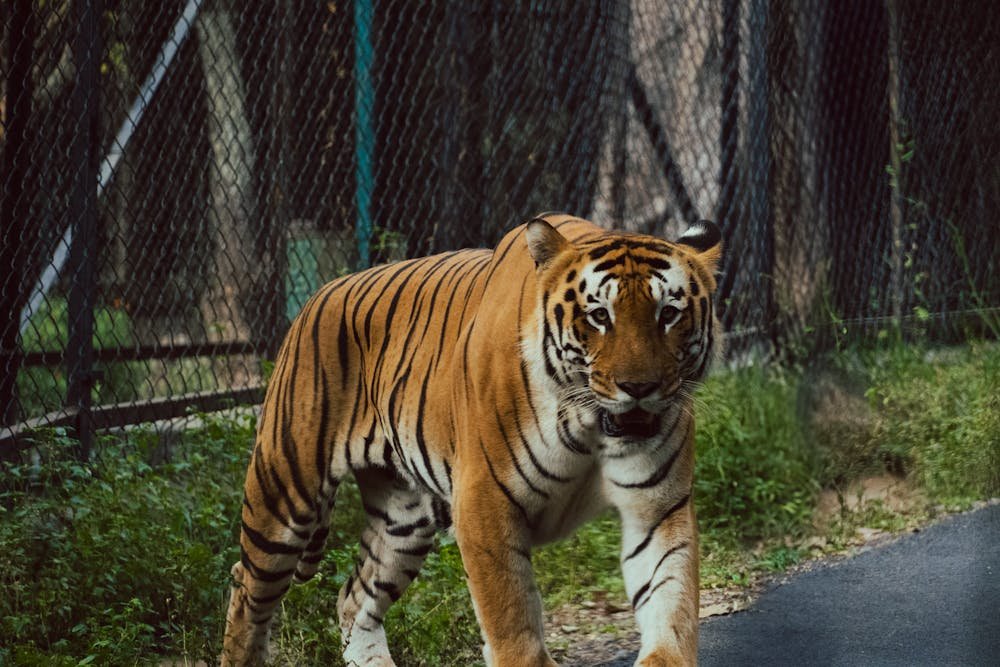A reign of terror that gripped villages around Nainital for 19 days finally ended with the successful capture of a man-eating tiger. The big cat had killed three women and numerous cattle in Jangaliya village and adjoining areas of Naukuchiatal and Bhimtal, creating panic among residents who feared venturing out for daily activities.
This tragic situation highlights the escalating human-wildlife conflict in Uttarakhand’s hill regions where expanding human settlements increasingly overlap with tiger territories. The successful capture operation brought relief to terrorized communities while raising important questions about managing dangerous wildlife in populated areas. Understanding how this crisis developed and was resolved provides crucial lessons for preventing future tragedies in regions where humans and apex predators must coexist.
The 19-Day Reign of Terror
Image by pexels
For nearly three weeks, fear paralyzed normal life in villages around Nainital. The big cat’s first victim sparked immediate concern, but subsequent attacks confirmed authorities were dealing with a man-eater. Three women lost their lives during this period, each death intensifying community terror and demands for action.
The tiger’s behavior pattern showed disturbing adaptation to human presence. Attacks occurred during daylight hours when women ventured out for daily activities like collecting fodder or tending fields. This boldness suggested the tiger had lost its natural fear of humans, a dangerous development in any predator.
Cattle losses compounded the tragedy. For hill communities dependent on livestock, each animal killed represented significant economic hardship. The tiger’s preference for easy prey – both human and livestock – indicated possible injury or age-related hunting difficulties.
Villages effectively went under self-imposed curfew. Children stopped attending schools, agricultural work halted, and essential activities like water collection became group endeavors. The psychological impact extended far beyond physical casualties, disrupting entire communities’ social and economic fabric.
Capturing the Man-Eating Big Cat
The operation to capture this dangerous big cat required careful planning and specialized expertise. Forest department teams, likely supported by tranquilizing experts and trained elephants, coordinated a complex strategy. In such terrain, tracking a clever predator demands both technology and traditional knowledge.
Camera traps helped establish the tiger’s movement patterns. Understanding its preferred routes and resting spots proved crucial for positioning capture teams. Local knowledge from villagers who’d spotted pugmarks or heard calls guided search efforts.
The actual capture likely involved cage traps baited with live animals. Once a man-eater develops a taste for human flesh, standard baiting often fails. Teams probably employed multiple strategies including machans (elevated platforms) for tranquilizer deployment.
Success after 19 days represents remarkable efficiency given the challenging terrain. Nainital’s dense forests and steep valleys provide countless hiding spots. The tiger’s capture without injury demonstrates professional handling that prioritizes both human safety and animal welfare.
Understanding Why Tigers Turn Man-Eater

Image by pexels
This big cat’s transformation into a man-eater likely resulted from multiple factors. Injury or dental problems often prevent tigers from hunting natural prey. Elderly tigers facing declining abilities may turn to easier targets. Without examining the captured animal, experts can only speculate about specific causes.
Habitat degradation plays a crucial role. As forests shrink and prey populations decline, tigers venture closer to human settlements. Desperation drives them to take risks they’d normally avoid. This environmental pressure creates perfect conditions for conflict.
Human behavior inadvertently encourages tiger problems. Villagers working alone in forest fringes become vulnerable targets. Once a tiger successfully hunts a human, it may recognize them as easy prey. This learned behavior makes the animal extremely dangerous.
Previous injuries from conflict with humans – perhaps from snares or defensive attacks – can create vengeful man-eaters. An injured, hungry tiger poses exponentially greater risks than healthy individuals maintaining natural hunting patterns.
Preventing Future Human-Wildlife Conflicts
This Nainital incident demands comprehensive responses beyond capturing individual problem animals. Creating buffer zones between tiger habitat and human settlements reduces encounter opportunities. These areas need restoration with natural prey species to keep tigers focused on appropriate targets.
Early warning systems save lives. Mobile alerts about tiger movements, community watch groups, and proper response training help villages react appropriately to threats. Technology like GPS collars on released tigers enables real-time monitoring.
Compensation schemes must adequately cover losses. When villagers receive fair payment for killed livestock, they’re less likely to retaliate against tigers. Quick disbursement of claims maintains community support for conservation.
Long-term solutions require landscape-level planning. Corridors connecting fragmented forests allow tigers natural movement without entering villages. Combined with prey base improvement and community education, such measures can minimize future tragedies. This big cat’s capture ends immediate danger but highlights ongoing challenges in human-tiger coexistence.






